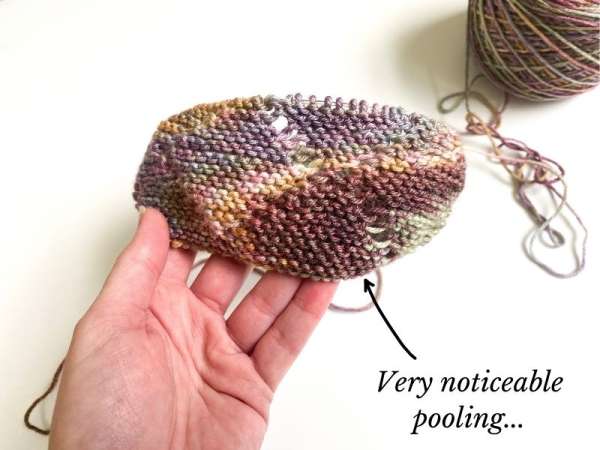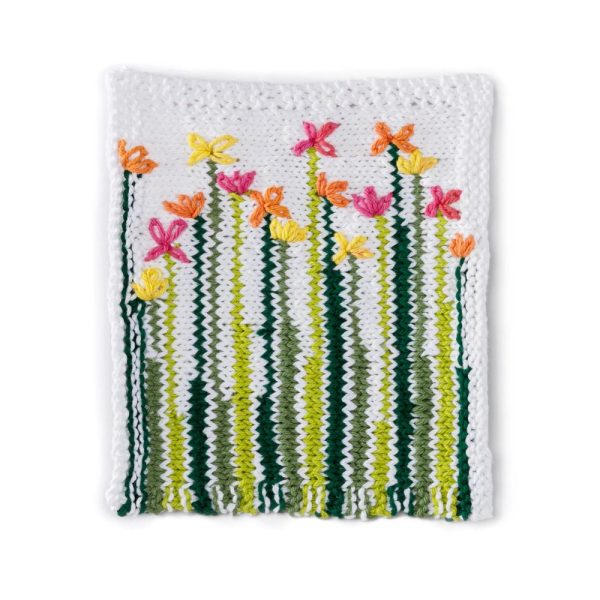 Working with hand-dyed yarn is a lot of fun, and it’s great for us to support independent yarn dyers when we can. But it can sometimes be tricky to use over the course of a full garment because of little differences in how the color appears from skein to skein. Sometimes when you change to working with a new skein of yarn it will be really obvious because the color is just slightly different, or if you’re working with a very colorful yarn sometimes you’ll get color pooling, where one color seems to always land in the same place in your knit fabric.
Working with hand-dyed yarn is a lot of fun, and it’s great for us to support independent yarn dyers when we can. But it can sometimes be tricky to use over the course of a full garment because of little differences in how the color appears from skein to skein. Sometimes when you change to working with a new skein of yarn it will be really obvious because the color is just slightly different, or if you’re working with a very colorful yarn sometimes you’ll get color pooling, where one color seems to always land in the same place in your knit fabric.
The best way to deal with these issues before they happen is to knit from two different skeins throughout, also known as alternating skeins. This breaks up the color from one row or round to the next, preventing pooling.
If you’re working with more of a solid or semi-solid color, you can choose to alternate skeins throughout, or just switch colors every round (every other row if you’re working flat) for maybe an inch (2.5 cm) or so when you’re about to run out of yarn so that the colors mix together visually and you don’t get that abrupt stripe.
Alternating skeins isn’t hard, but it can sound tricky if you’ve never tried it before. Elizabeth Smith Knits has a couple of good videos along with some tips on different methods for carrying the yarn up as you go, which I think generally is the part that confuses people, especially newer knitters (no, you do not have to cut the yarn after every row as you alternate skeins).
This is one of those things that sounds like such a little thing but it makes a big difference. If you’ve ever knit a project and had the colors pool in a weird way or gotten that line where you switched colors, you know it’s worth the little extra bit of time it takes to do this. And if you’ve never done that, starting out with this technique when you start working with hand-dyed yarn on larger projects will make your results a lot better without a lot of extra work.
Have you used alternating skeins in a project before? Or failed to and wished you had? I’d love to hear about it!
[Photo: Elizabeth Smith Knits]
 One great thing to knit when the weather is warm (or honestly any other time) is dishcloths and washcloths. They are fun and easy projects and a great way to play with new skills. Pretty washcloths make cleaning a tiny bit more fun, and they’re great to have on hand as a quick addition to a store-bought gift.
One great thing to knit when the weather is warm (or honestly any other time) is dishcloths and washcloths. They are fun and easy projects and a great way to play with new skills. Pretty washcloths make cleaning a tiny bit more fun, and they’re great to have on hand as a quick addition to a store-bought gift.